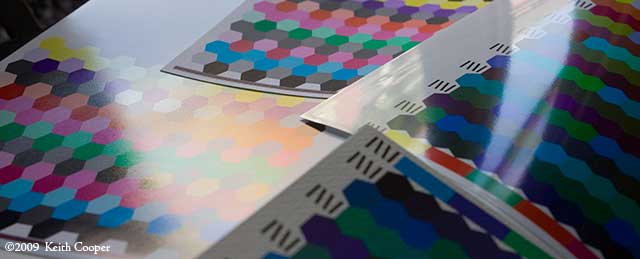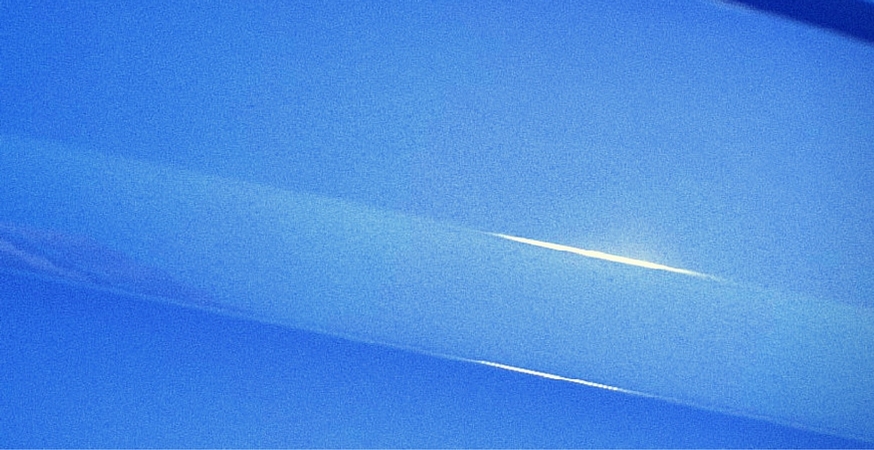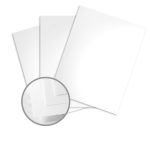Sometimes, you need your paper projects to pack a little extra punch. Paper texture and print finish are great ways to subtly notch up your printed project’s oomph, but when you need crisp, bright print quality, glossy paper is the way to go.
What is Glossy Paper?
Glossy paper is coated to have a shiny finish.
Different glossy papers are suited for different uses. This is because each variety of glossy paper is created using a different coating formulation, depending on the intended use of the paper. Coatings can be:
- Porous, allowing the ink to absorb into the paper
- Non-porous, created by applying resin to the paper surface
- Designed specifically for laser printers to allow the plastic particles from the toner to melt with the paper and bond to the sheet
When you choose glossy paper, make sure you choose a variety that’s intended for your purpose. Keep reading for our tips on choosing the right glossy paper.
Types of Glossy Paper
There are three main types of glossy (or non-glossy) paper:
1. High Gloss
High gloss paper is the shiniest, glossiest paper you can get. High gloss paper provides vibrant, rich color reproduction, as well as the crispest resolution, but it can be difficult to view under bright lights because it can reflect that light and cause glare.

Photo Credit: Keith Cooper for Northlight Images
2. Semi Gloss
Also known as “satin finish”, semi gloss paper sits roughly in the middle between matte and glossy paper. It offers some of the same advantages as high gloss paper, like bright colors and sharp resolution, but its more ideal for crafting or displaying behind glass.
3. Matte
Matte paper can be coated or uncoated, but it lacks the shiny finish of glossy paper. Because matte paper tends to soak up ink, it doesn’t reproduce colors as vibrantly and printed images can appear less sharp, but it is easier to view under bright lights because it doesn’t have that shiny, reflective coating.
Advantages and Disadvantages of Using Glossy Paper
No paper is perfect, and glossy paper is no exception. Glossy paper offers a number of advantages over matte paper, but these advantages come with trade-offs that might make glossy paper less than ideal in some situations, including scrapbooking or displaying behind glass.
Advantages
- Brighter, more vibrant color reproduction
- Wider color range
- Greater contrast between light and dark shades
- Crisper, sharper resolution
- Luxurious finish
Disadvantages
- Requires special consideration when printing
- More difficult to handle – fingerprints can appear very obvious
- Bright lights can cause glare and make it difficult to read or view your materials
- Not ideal for mounting behind glass – the glossy finish can stick to the glass surface. If you’re mounting behind glass, use matte or semi-gloss finish.
When to Use Glossy Paper
Glossy paper is most commonly used for printing photos and promotional materials.
Printing Photographs
Glossy paper is often ideal for photography because it allows more vibrant colors and sharper image reproduction. However, there are times when glossy paper is not ideal for printing photos:
- Scrapbooking. Fingerprints are very obvious on glossy photos, and glossy finishes can also stick to the page in front. Try using semi-gloss paper instead.
- Displaying large photos. If you’re displaying a photo “naked”, or not behind glass, glossy finishes can cause glare by reflecting light. Glossy finishes can also stick to glass if you’re mounting your photo behind glass, which can damage the print.
Promotional Materials
Glossy paper adds a little something extra to your brochures, flyers, business cards, or other promotional material.
Choosing a glossy paper for your promotional materials is different than picking a glossy paper for printing photos. Photo paper is too thick; instead, glossy paper for promotional materials should be a bit lighter so it can be easily folded or bound.
If you’re printing promotional materials on glossy paper, be sure you use the right paper. If you use a paper that isn’t designed for your printer, you can actually damage your printing equipment:
- Inkjet printers: If you use a laser gloss coated paper in your inkjet paper, the paper won’t absorb the ink and you might end up with ink on your paper-feeding hardware.
- Laser printers: Inkjet gloss coated papers don’t allow for proper toner bond, and the ink can actually melt inside your printer. Make sure you use a glossy paper designed for laser printers.
Here are some glossy papers that are perfect for promotional materials:
Get Glossy
Whether you want to print the brightest, crispest photos or create a memorable promotional piece, nothing gets noticed like glossy paper.
Take a look at all of our glossy papers.





